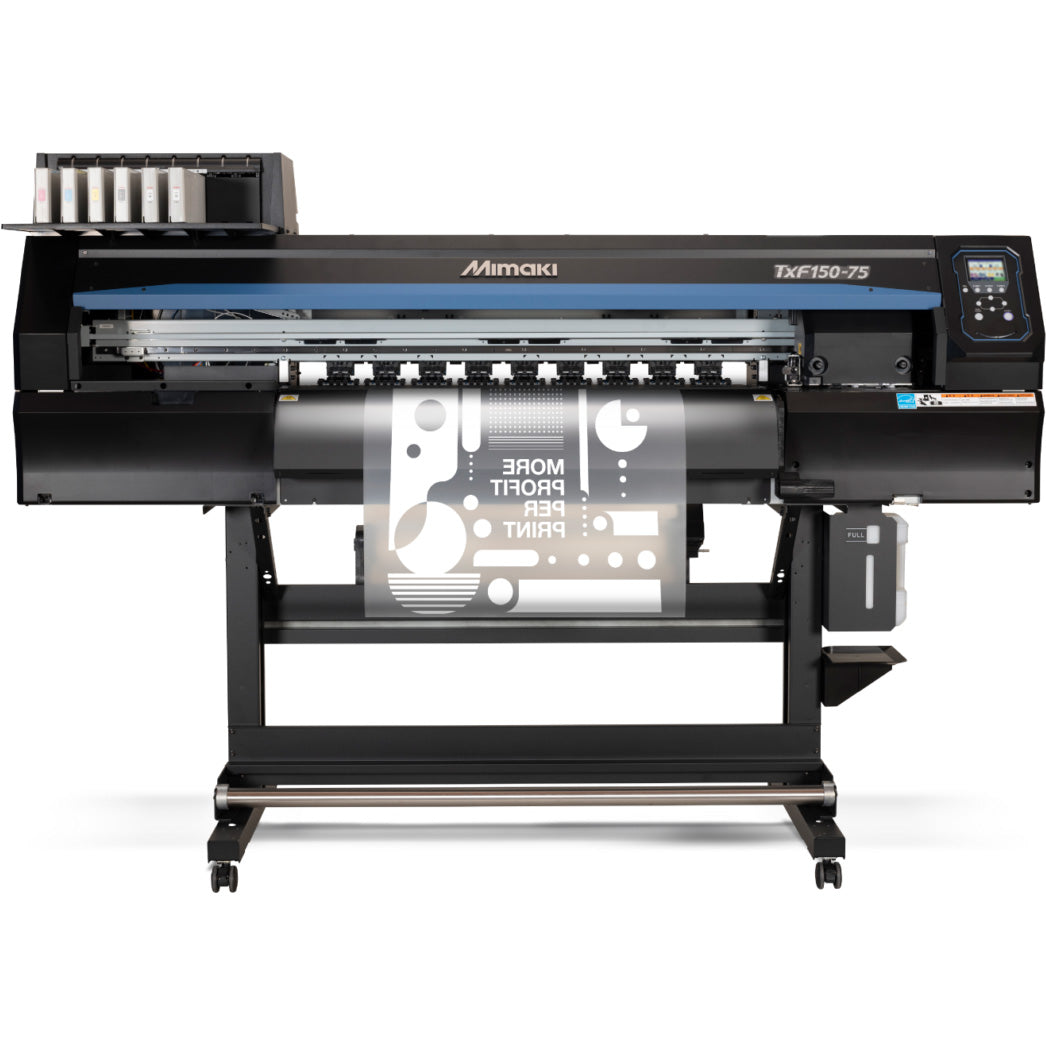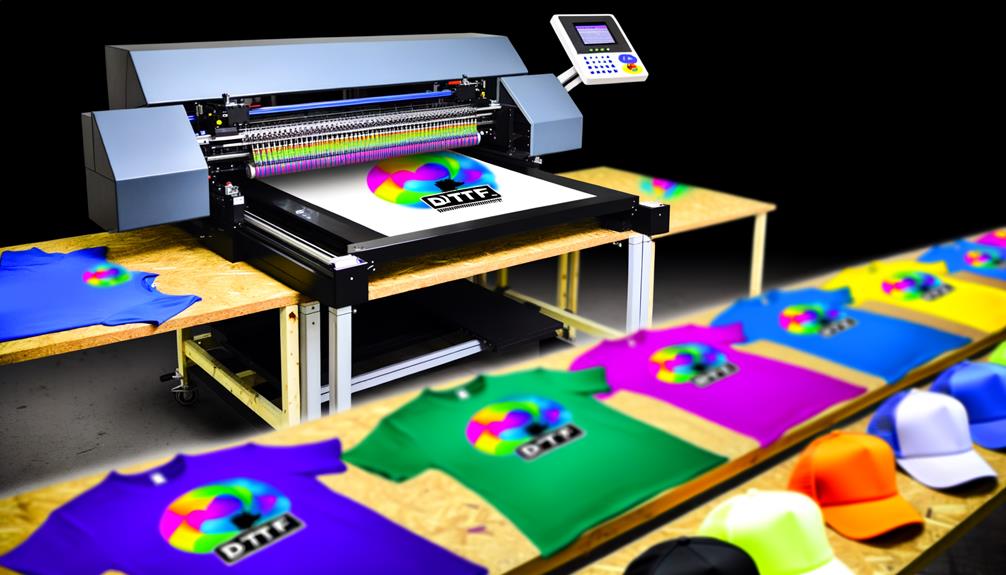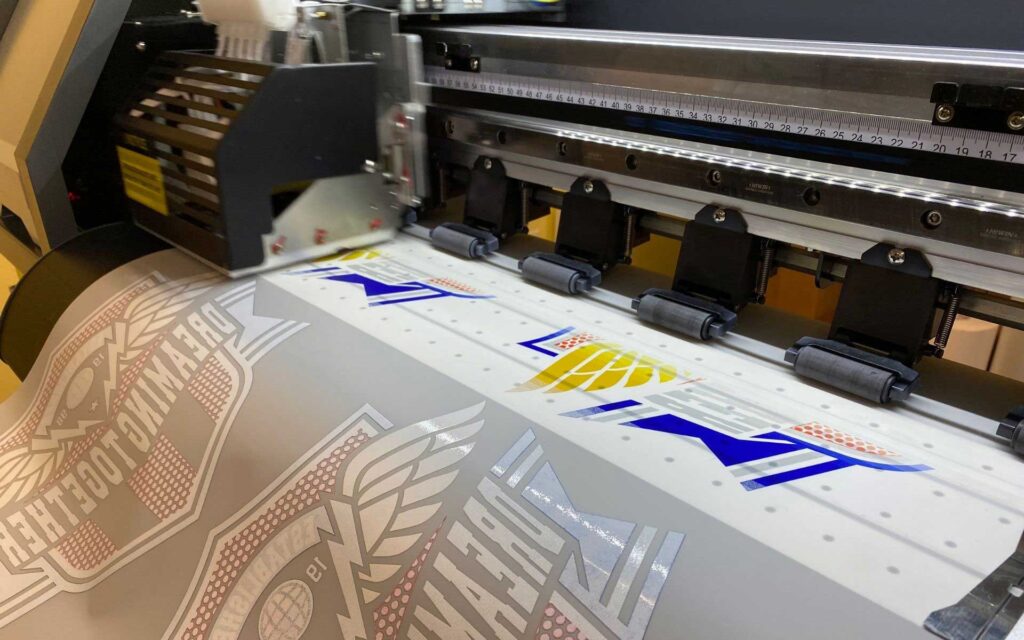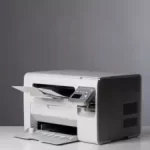Introduction to DTF Printing
Direct-to-Film (DTF) printing is revolutionizing the textile and garment industry, offering a cutting-edge solution for custom designs. Whether you’re an entrepreneur exploring business opportunities or a hobbyist seeking vibrant prints, understanding DTF printers is essential.
What is a DTF Printer?
A DTF printer is a specialized machine that allows you to transfer designs directly onto fabrics using a film. Unlike traditional methods like screen printing or DTG, DTF printers use a unique combination of inks and films to achieve high-quality results. This process makes it possible to print intricate designs on a wide range of materials, including cotton, polyester, and blends.
How DTF Printing Works
The process involves printing the design onto a special transfer film using DTF ink. Afterward, an adhesive powder is applied to the printed film, and it’s cured using heat. Once ready, the film is pressed onto the fabric using a heat press machine, resulting in a durable and vibrant print.
Why DTF Printing is Gaining Popularity
DTF printing stands out due to its versatility, ease of use, and cost-effectiveness. Unlike other methods, it allows you to print on dark fabrics without the need for pretreatment. Moreover, the durability and washability of DTF prints make them ideal for both casual and commercial use.
Key Components of a DTF Printer
To understand DTF printing better, let’s explore its essential components:
Printer Machine
At the heart of the process is the DTF printer, which typically resembles an inkjet printer but is adapted to work with DTF ink and film. These printers are engineered for precision and high resolution.
DTF Ink
DTF printers use pigment-based inks specifically designed to adhere to fabrics. These inks are available in CMYK colors and white, which is crucial for creating vibrant designs on dark materials.
Transfer Film
Transfer films are specially coated sheets used to carry the printed design. They ensure that the image transfers seamlessly onto the fabric.

Heat Press Machine
A heat press machine applies the necessary heat and pressure to transfer the design from the film to the fabric. This equipment is vital for ensuring a smooth and durable finish.
Advantages of Using DTF Printers
What makes DTF printing so appealing? Let’s dive into its key benefits.
High-Quality Prints
DTF printers produce exceptional quality with sharp details and vibrant colors. The prints are also resistant to cracking and fading, ensuring long-lasting results.
Compatibility with Multiple Fabrics
One of the standout features of DTF printing is its ability to work with various fabrics, including cotton, polyester, denim, and even leather.
Cost-Effectiveness
Compared to traditional methods, DTF printing is more economical. It eliminates the need for pretreatment and reduces material waste, making it a budget-friendly option.
Limitations of DTF Printing
Despite its advantages, DTF printing does come with some limitations.
Equipment and Maintenance Costs
DTF printers and their accessories require a significant upfront investment. Additionally, regular maintenance is crucial to prevent issues like print head clogging.
Environmental Concerns with Plastics
The use of transfer films and adhesives raises questions about environmental sustainability. However, advancements in eco-friendly materials are helping to address these concerns.

Comparing DTF Printing to Other Printing Methods
DTF printing isn’t the only option in the market. Here’s how it stacks up against other techniques:
DTF vs. DTG (Direct-to-Garment)
While DTG offers excellent results on cotton, it struggles with other fabrics. DTF, on the other hand, works seamlessly on various materials and doesn’t require pretreatment.
DTF vs. Sublimation Printing
Sublimation is ideal for polyester but falls short on cotton and dark fabrics. DTF’s versatility makes it the better choice for diverse projects.
DTF vs. Screen Printing
Screen printing excels in bulk orders but involves higher setup costs. DTF is more cost-effective for small to medium-sized runs.
Applications of DTF Printers
DTF printers are making waves in a variety of industries. Let’s explore their most common applications.
Fashion Industry
The fashion industry has embraced DTF printing for its ability to create intricate designs on a wide array of fabrics. From custom T-shirts to high-end fashion pieces, DTF printing provides designers with a versatile tool to bring their visions to life. The technology also enables fast prototyping, allowing designers to experiment with new ideas efficiently.
Customized Apparel Businesses
Small and medium-sized businesses specializing in personalized clothing have found DTF printers to be a game-changer. The ability to print unique designs on demand helps entrepreneurs cater to niche markets. Whether it’s custom hoodies, tote bags, or caps, DTF printing provides the flexibility and cost savings that these businesses need.
Corporate Branding and Uniforms
Companies rely on DTF printing to create branded apparel and uniforms for employees. The durability of DTF prints ensures that logos and designs remain intact even after repeated washing, making it an ideal solution for corporate wear. Additionally, the ability to print on a variety of materials allows businesses to customize uniforms according to their specific requirements.
How to Choose the Right DTF Printer
With so many options on the market, selecting the right DTF printer can feel overwhelming. Here’s what you should consider:
Printer Size and Capacity
Think about the scale of your printing needs. For small businesses or personal use, compact models might be sufficient. However, larger businesses with high-volume requirements should invest in industrial-grade printers capable of handling bulk orders.
Budget and Pricing
DTF printers come in a range of price points, from entry-level models to high-end machines. Consider your budget, but don’t compromise on essential features like resolution and durability. Keep in mind the long-term costs of maintenance, inks, and transfer films.
Brand Reputation and Support
Opt for brands with a strong reputation in the market. Good customer support, warranty options, and access to spare parts are crucial factors to ensure a smooth experience. Reading reviews and seeking recommendations can help you make an informed choice.Setting Up Your DTF Printer
Once you’ve purchased your DTF printer, proper setup is essential to achieve the best results.
Preparing the Printer
Start by ensuring that your printer is placed on a stable surface in a well-ventilated area. Load the specialized DTF inks into the printer, following the manufacturer’s instructions. Regularly check the printer’s settings to ensure optimal performance.
Loading the Transfer Film
Place the transfer film into the printer’s feed tray, ensuring it is aligned correctly. This step is crucial to prevent misprints and ensure that your design transfers seamlessly.
Applying the Heat Press
After printing and applying adhesive powder, the film needs to be cured. Use a heat press machine to bond the adhesive to the design. Then, position the film on your fabric and use the heat press again to transfer the design. Adjust the temperature and pressure settings based on the material you’re working with.
Common Challenges in DTF Printing and How to Overcome Them
While DTF printing is innovative, it’s not without its challenges. Here’s how to address them:
Print Head Clogging
Clogging can occur if the printer is not used regularly or maintained properly. To prevent this, clean the print head frequently and use high-quality inks. Regular printing, even small test designs, can keep the nozzles from drying out.
Color Accuracy Issues
Sometimes, colors in the final print may not match the design. To resolve this, calibrate your printer and monitor. Using ICC (International Color Consortium) profiles can also help ensure consistent color output.
Film Adhesion Problems
If the design doesn’t adhere properly to the fabric, check the heat press settings. Ensure the temperature, pressure, and pressing time are appropriate for the material. Using high-quality transfer films and adhesives can also make a significant difference.
Tips to Optimize Your DTF Printing Results
Want to get the most out of your DTF printer? Follow these expert tips:
Proper Maintenance of Equipment
Regular cleaning and servicing of your printer can extend its lifespan and ensure consistent results. Pay special attention to the print heads and ink lines to prevent blockages.
Using High-Quality Inks and Films
Investing in premium inks and transfer films can significantly improve the quality of your prints. Cheap materials may save money upfront but often lead to subpar results and higher long-term costs.
Heat Press Techniques
Mastering the heat press is crucial for achieving professional-quality prints. Experiment with different settings to find the optimal combination for various fabrics. Always preheat the fabric to remove moisture and ensure a smooth application.
Future Trends in DTF Printing Technology
The world of DTF printing is evolving rapidly. Let’s take a look at what the future holds:
Advancements in Ink Formulas
Research is underway to develop inks that offer even better durability and color vibrancy. These innovations will further enhance the appeal of DTF printing for commercial and personal use.
Eco-Friendly Innovations
As environmental concerns grow, manufacturers are focusing on creating sustainable transfer films and biodegradable adhesives. These eco-friendly advancements will make DTF printing a more sustainable choice.
FAQs About DTF Printers
- What fabrics can DTF printers work with?
DTF printers are compatible with a wide range of materials, including cotton, polyester, blends, leather, and more. - Is DTF printing better than screen printing?
For small to medium orders, DTF printing is more cost-effective and versatile. However, screen printing is better suited for bulk orders. - How do I maintain my DTF printer?
Regular cleaning, proper storage of inks, and frequent use can help maintain your DTF printer in top condition. - Can I use regular ink in a DTF printer?
No, DTF printers require specialized pigment inks designed for fabric adhesion. Using regular inks may damage the printer and result in poor-quality prints. - Are DTF prints durable?
Yes, DTF prints are highly durable and resistant to cracking, peeling, and fading, making them ideal for long-term use.



